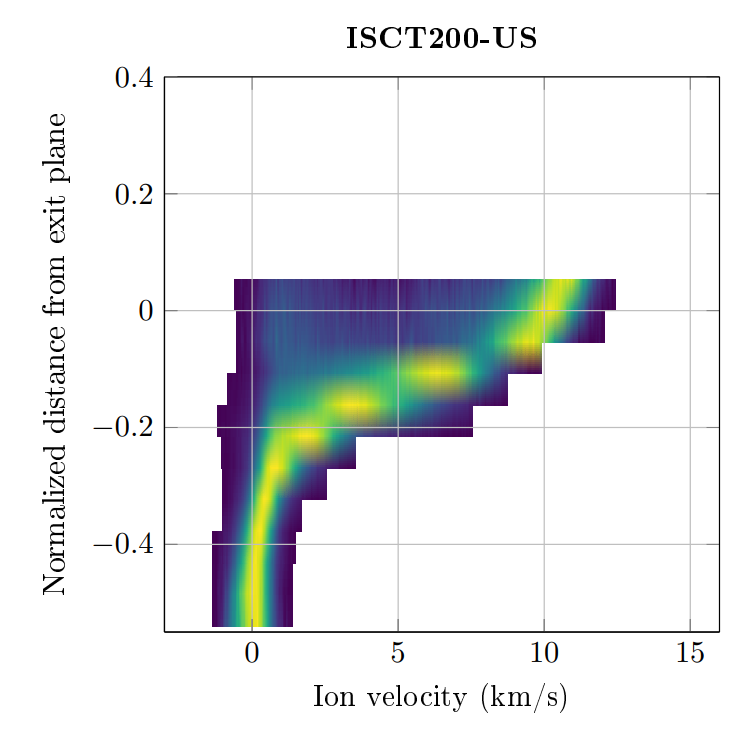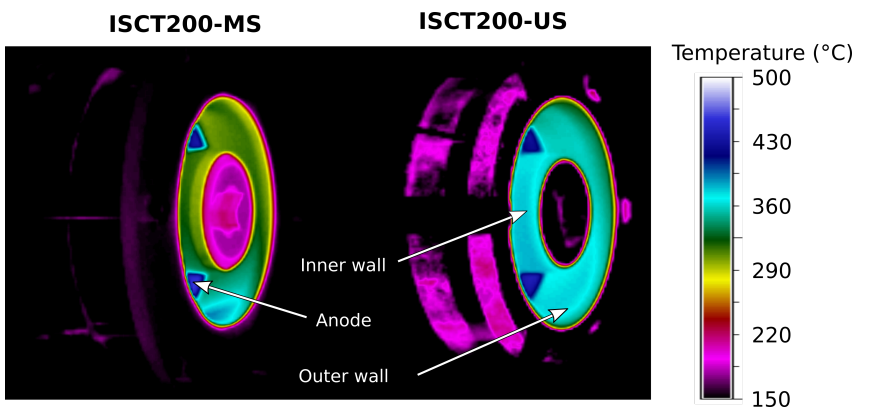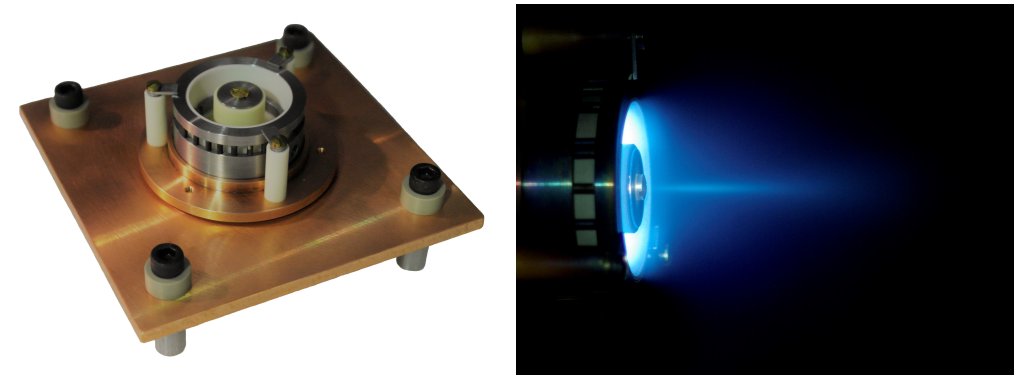So did you know that no-one really knows why the most used spacecraft propulsion system today actually works?
I have been bored and kind of sick for the past 2 days so here is a quick thread on Hall thruster physics:
1/
I have been bored and kind of sick for the past 2 days so here is a quick thread on Hall thruster physics:
1/

So 1st quick introduction. A Hall thruster (HT) is a type of electric propulsion system, it uses electricity to accelerate mass and push spacecraft along. While they are not really a new tech (flown 1st in the 70s) they are now dominating, being used on Starlink and OneWeb
2/
2/

Electric propulsion systems are often power limited. And the power of a system is proportional to the jet velocity (~Isp) and the thrust. Hall thrusters are great because they are at to the sweep spot between the two. Typical numbers are 1600s Isp and 50 mN/kW.
3/
3/

This means you get enough Isp to make a real difference in total spacecraft mass, but also enough thrust to get somewhere in a reasonable time without needing incredibly large solar arrays.
They also have a pretty good thrust density compared to electrostatic thrusters.
4/
They also have a pretty good thrust density compared to electrostatic thrusters.
4/
Anyway, how do they work? A classical HT consists in:
- A annular shaped discharge channel, usually made of ceramic that contain the plasma
- An gas injector system at the back that often doubles as an electrode
- A magnetic circuit to generate a radial magnetic field.
5/
- A annular shaped discharge channel, usually made of ceramic that contain the plasma
- An gas injector system at the back that often doubles as an electrode
- A magnetic circuit to generate a radial magnetic field.
5/

The working principle is a bit convoluted to explain because unlike other electric propulsion systems we have ionization, confinement and acceleration all happening at once.
What I like to do is to follow the electrons first
6/
What I like to do is to follow the electrons first
6/
Electrons are emitted from a cathode, and want to move toward the positive anode at the back of the thruster. As they enter the channel they meet a radial magnetic field. Due to Lorentz force they will start to spin round and round inside the discharge channel
7/
7/

This creates the Hall current (which gives the name to the thruster). It can result in pretty high current density. When neutral atoms injected at the back of the thruster meet that current they get ionized. This creates more electrons trapped and the ions to be accelerated.
8/
8/
This magnetic barrier for the electrons also means that the potential difference between anode and cathode (typically ~300V) result in a large electric field where the magnetic field is the most intense, and this accelerates the ion that are formed, producing thrust.
9/

9/


So the force on a Hall thruster is actually pushing on the electro-magnets.
Some of the electrons produced by the cathode are also used to neutralize the ion beam leaving the thruster.
10/
Some of the electrons produced by the cathode are also used to neutralize the ion beam leaving the thruster.
10/

Naively when you first look at this it seems like it wouldn't be that hard to simulate, after all it's "just" electrons diffusing into an ExB field. That's pretty much nice classical physics. No QM sorcery, high energy nonsense or -even worst- "chemistry".
11/
11/
So you take you pen and paper, put on some reasonable numbers on electron temperatures, cross sections, ionization probabilities, etc. And you end up with about 10 times less electrons making it through the magnetic field as it does in real life...
12/
12/
Now that might be good enough for astronomers, but aerospace engineers usually like to have something a bit closer to reality.
So if pen and paper doesn't work what about simulations? After all let the computers do the maths for you, that's what they are for.
13/
So if pen and paper doesn't work what about simulations? After all let the computers do the maths for you, that's what they are for.
13/
As it turns out gas density in a HT is so low you can't really use the normal fluid equations. There is not enough collisions to get nice statistical Maxwell-Boltzmann distributions. So you need to simulate the ions as individual particles.
14/
14/
Ideally you would also simulate the electrons as individual particles, but they are so much smaller and faster than the ions that it makes simulation time out of reach of normal researchers. So the compromise for most people is to use hybrid particle in cell codes.
15/
15/

The ions are simulated as particles, and the electrons as a fluid. Even with that you still end up having to introduce a fudge factor to make it match with reality. We call it "anomalous transport". The electrons go through the magnetic barrier way faster than they should.
16/
16/
So where does this anomalous transport come from? Morozov, the inventor of the Hall thruster, worked a lot on showing that it was caused by near wall conductivity in the 80s and 90s. We know that changing the ceramic of the walls has big impact on performance.
17/
17/
His idea was that electrons colliding with the walls would create secondary electrons near the walls, and diffuse more easily through the magnetic field. However modern simulations including this effect still don't match reality.
18/
18/
The next step is obviously blaming physicists' favorite boogeyman ~turbulence~. A well known one in HT is the spoke instability where one or more structures start to spin inside the thruster. I did a bit of high speed camera work on this during my PhD.
19/

19/


Sadly running the numbers it doesn't seems to be enough to explain the anomalous transport.
The current hypothesis is that we are looking at a combination of wall interactions and micro turbulence/instabilities. To work on that labs are developing new probing methods.
20/
The current hypothesis is that we are looking at a combination of wall interactions and micro turbulence/instabilities. To work on that labs are developing new probing methods.
20/
One of the main challenge with investigating this is that we are talking about small structures (~mm size) at highish frequencies that are present inside the discharge channel. Using physical probes disturb the discharge and laser diagnostics are complicated and expensive.
21/
21/

So in conclusion we are still missing one of the fundamental reason why Hall thrusters work as they do. That makes it hard to derive scaling laws and theoretical design tools, which is why most Hall thruster design is very much an iterative and experimental thing.
22/22

22/22


Since that tweet has blown up a bit if you are interested in working on that kind of thing our team is recruiting in Austria: enpulsion.com/career/
• • •
Missing some Tweet in this thread? You can try to
force a refresh







